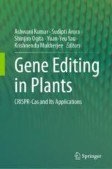Search
Search Results
-
Integument
The skin of birds keeps out pathogens and other potentially harmful substances, retains vital fluids and gases, serves as a sensory organ, and...
-
Lipid Metabolism in Insect Vectors of Diseases
According to the World Health Organization vector-borne diseases account for more than 17% of all infectious diseases, causing more than 700,000...
-
Silicon fertilisation affects morphological and immune defences of an insect pest and enhances plant compensatory growth
Herbivorous insects have evolved various anti-predator defences, including morphological, behavioural, and immune defences, which can make biocontrol...

-
Insect Chemical Defense
Research on the defensive chemistry of insects during the last decade is reviewed, with special emphasis on non-volatile compounds. The isolation and...
-
Insect Lipids: Structure, Classification, and Function
Lipids are a diverse group of compounds that play several important roles in insect physiology. Among biological lipids, the fundamental category...
-
CRISPR-Based Genetic Control Strategies for Insect Pests to Mitigate Classical Insecticidal Approaches
Nutraceutical properties of food have always been an important interface of concern as food directs both physical and mental health and forms the...
-
Diversity of transgenes in sustainable management of insect pests
Insecticidal transgenes, when incorporated and expressed in plants, confer resistance against insects by producing several products having...

-
Insect phenoloxidase and its diverse roles: melanogenesis and beyond
Insect life on earth is greatly diversified despite being exposed to several infectious agents due to their diverse habitats and ecological niche....

-
Lipids in Insect Reproduction: Where, How, and Why
Modern insects have inhabited the earth for hundreds of millions of years, and part of their successful adaptation lies in their many reproductive...
-
AA15 lytic polysaccharide monooxygenase is required for efficient chitinous cuticle turnover during insect molting
Microbial lytic polysaccharide monooxygenases (LPMOs) catalyze the oxidative cleavage of crystalline polysaccharides including chitin and cellulose....

-

-
A CTL − Lys immune function maintains insect metamorphosis by preventing gut bacterial dysbiosis and limiting opportunistic infections
BackgroundGut bacteria are beneficial to the host, many of which must be passed on to host offspring. During metamorphosis, the midgut of...

-
Polymorphisms in Insect Predators
The behaviour, life history, physiology, and morphology of natural enemies’ victims are all affected in different ways. Scientists and naturalists...
-
Beauveria bassiana transcriptomics reveal virulence-associated shifts during insect lipid assimilation
AbstractInsect cuticular lipids, especially epicuticular hydrocarbons (CHC), have a significant role in insect ecology and interactions with other...

-
Cuticular protein genes are involved with insecticide resistance mechanism in red flour beetles, Tribolium castaneum (Coleoptera: Tenebrionidae)
The insect integument, which consists mainly of chitin microfibrils and cuticular proteins, is an extracellular matrix that covers the entire...

-
Performance of Larvae of the Black Soldier Fly (Hermetia illucens) in the Bioconversion Process of Brewery Waste and Insect Farming (Ephestia Kuehniella)
This work aimed to evaluate the performance of black soldier fly larvae - Hermetia illucens (BSFL) in the bioconversion process of waste resulting...

-
Molecular mechanisms, genetic map**, and genome editing for insect pest resistance in field crops
Key messageImproving crop resistance against insect pests is crucial for ensuring future food security. Integrating genomics with modern breeding...

-
Offense and Defence Mechanism of Insect Predators
In contrast to predatory aggression, offence and defensive behaviours are two types of aggression that are displayed by one member of a species...
-

-
Entomopathogenic microorganisms: their role in insect pest management
BackgroundEntomopathogens are pathogenic to insect pests. Several types of naturally occurring, viz. fungus, bacteria, viruses, and nematodes, infect...
